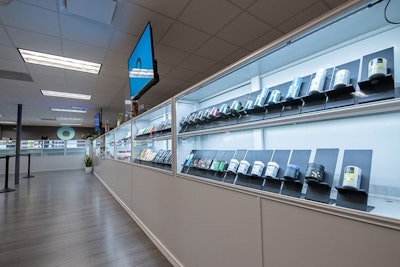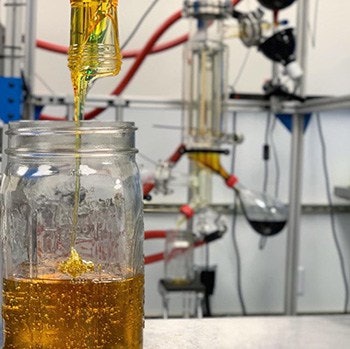
When Andreas Neumann joined Jushi Holdings as chief creative director in early 2020, he brought with him a professional background steeped in experiential brand development. He was new to the cannabis industry, but the cannabis industry itself is new to the vast commercial landscape in the U.S. When he arrived, the industry was moving headlong into a conversation about the importance of brand-building for the long haul.
 jushi beyond hello
jushi beyond hello“My vision of the future of branding and communication is really that the experience equals the brand,” Neumann said in recent interview with Cannabis Business Times and Cannabis Dispensary.
He had been working with Queens of the Stone Age on a possible cannabis brand—something to draw on the band’s long-tenured role as stewards of stoner rock—when he linked up with Jushi. The multi-state operator was planning to overhaul its digital experience, and Neumann’s perspective arrived just in time.
In April, shortly after the beginning of the coronavirus pandemic and the series of stay-at-home orders in the U.S., Jushi’s retail brand, BEYOND/HELLO relaunched its website to better accommodate the customer experience and the rise of online shopping. Nuemann said he wanted to blend the digital and physical, using data to understand what Jushi’s customers wanted—and where and when and why they wanted it.
What did he and his team learn right away? “Everybody wants to go to the menu,” he said, so Jushi foregrounded the menu on its relaunch. “And, ideally, they’re already making a decision about what they want to get in the store and where they’re going to get it.” Digital and physical.
Jushi is on the ground in four states, with eight retail storefronts in Pennsylvania, two in Illinois, one in California and one coming soon in Virginia.
Among those customer bases, Neumann said that he noticed 85% of users were approaching the BEYOND/HELLO website from mobile platforms (and only 9% of users coming from a desktop computer).
Blatant statistics like that helped push Jushi’s creative team in the direction of a smartphone-friendly website that allows customers to quickly find what they’re looking for in a way that may match their digitally savvy lifestyle.
“That’s the reality, so you’ve got to build for mobile,” Neumann said. “Overnight, it was an incredible success. I’ve never seen anything like it. People really want the product, and all you can do is support them and make the process as frictionless as possible.”
He suggests cannabis businesses gather as much data as they can about their operations. This can be customer sales trends, vendor purchase order trends and regulatory data already tracked by seed-to-sale software. The key is to put it all together and assemble a meaningful narrative that can then improve on the business-to-customer relationship.
“You’re looking at this digital environment today, and you’re facing all these silos of data,” Neumann said. “If you connect all that, you can create products for the people and focus on what they want.”
Jushi’s vice president of cultivation, Josh Malman, said that this has been an important narrative in the cannabis industry lately.
With more data available to businesses, it ends up being the customer that decides certain moves in product development and innovation. Even genetics selection is something that stems from consumer demand for downstream products like new concentrates or vape cartridges.
“Historically, the grower got to decide what they wanted to grow and they were picking what yielded the most, what was the easiest to grow and what they like to use,” Malman said. “Over the years, that decision-making process has been rolling up the manufacturing department and the retail department, because, at the end of the day, those are the groups that are utilizing this product for end users. Getting to understand what they need for their own processes has been really important.”
It's this merger of front-end consumer data and back-end cultivation decisions that Neumann cited as the real power of harnessing all of this new information. He brought a creative lens through which Jushi could more carefully develop its suite of brands, but he pointed out that creativity is only as valuable as the return that a business sees on the bottom line.
Are all these ideas driving profits? It’s easy to overlook that simple necessity when a business is focused on honing its brand and telling its story to the marketplace. But, of course, sales matter.
“I think adding a team like [Neumann’s] and collecting the data directly from our POS systems and our trending of what the actual patient and customer wants [has been very important],” Malman said. “We continue to drive that progression of crop planning and production planning to a point where the grower is responsible for producing a high-quality output, but maybe has less input in terms of what they get to decide on growing. Some growers may not like that, but for the overall health and growth of the business it is absolutely the right way that we should go.”

























